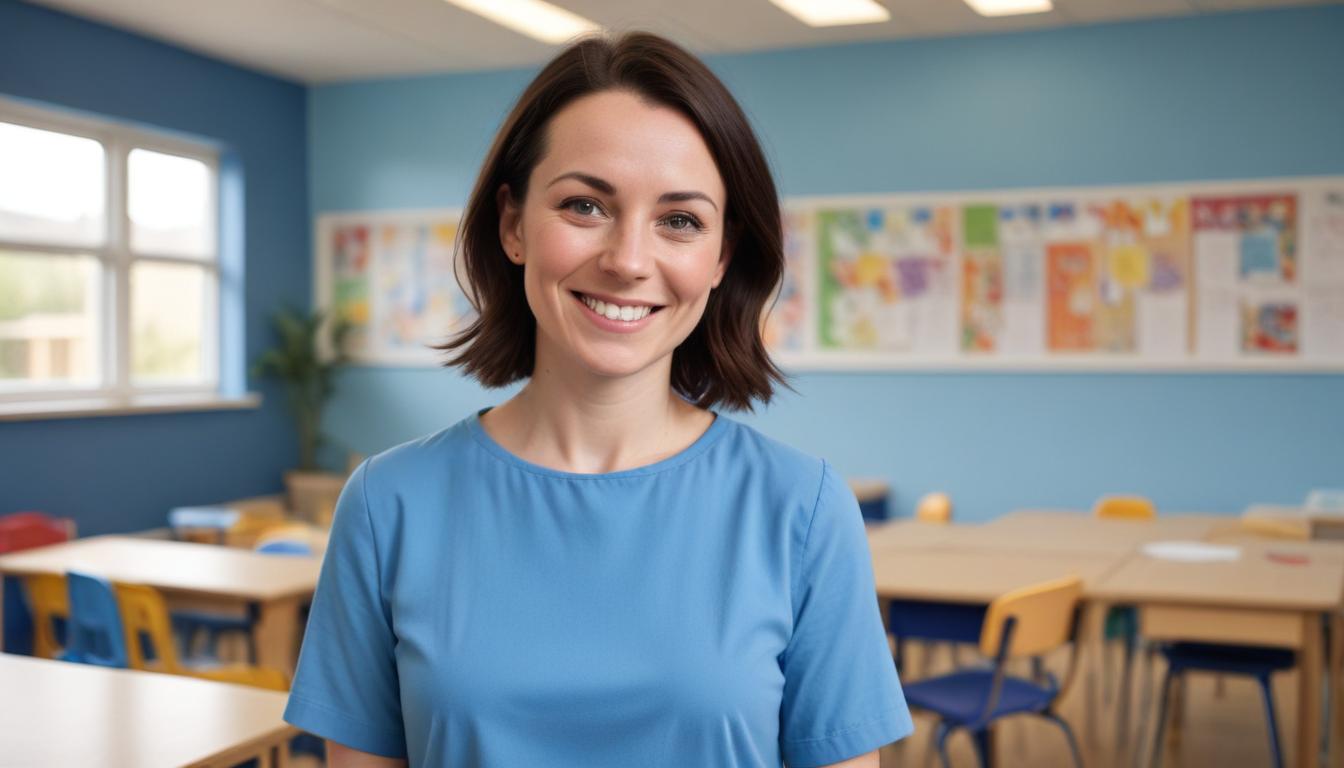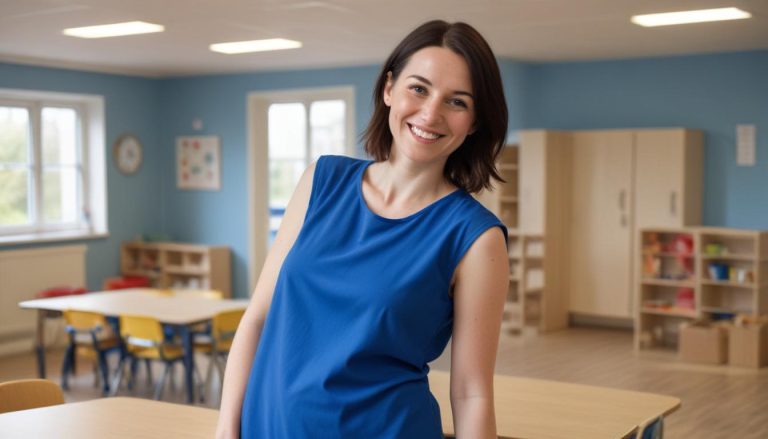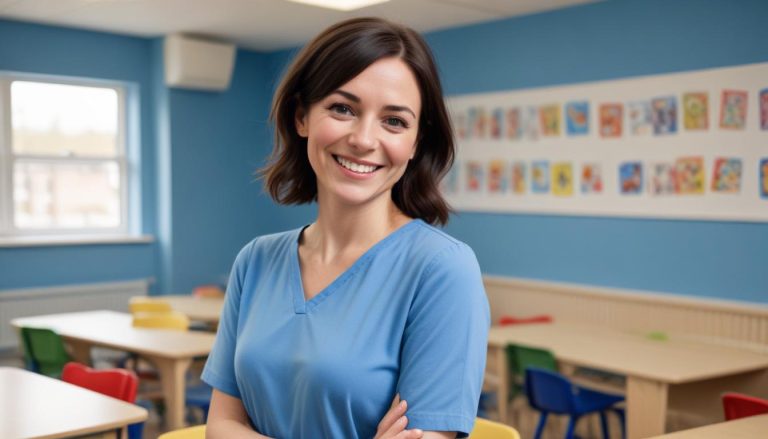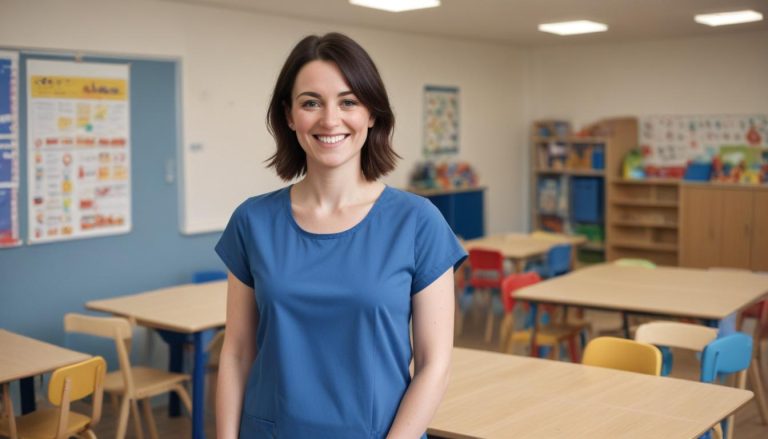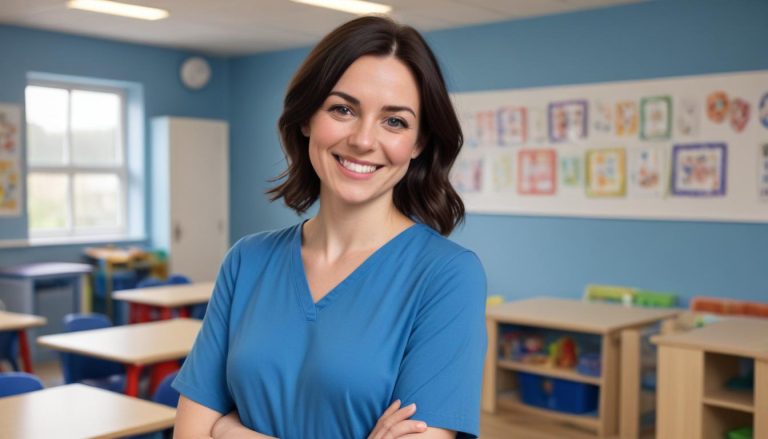This guide will help you answer 5.2 Use examples to describe how early years educators provide opportunities for co-regulation in an early years setting.
Co-regulation refers to the supportive process where an adult helps a child manage their emotions, behaviour, and thoughts. For young children, this usually requires a trusted adult to guide them in recognising feelings, calming down, and problem-solving. Early years educators play a central role in co-regulation as they help children learn these skills, particularly during times of emotional distress or social conflict.
Children are not born with self-regulation skills. They need experiences and supportive adults to guide them before they can master the ability to regulate themselves. Co-regulation happens through warm relationships, structured environments, and intentional adult interactions. In this guide, we cover how early years educators provide such opportunities in practice.
Building Positive Relationships
A trusting relationship is essential. Children are more likely to accept help with managing emotions when they feel safe and supported.
Educators achieve this by:
- Getting to know the child’s interests, preferences, and triggers.
- Spending time talking, listening, and showing genuine warmth.
- Using gentle and consistent tones when speaking with the child.
For example, if a child feels overwhelmed during a busy group activity, the educator might recognise the child’s discomfort and offer simple verbal reassurance. They could say, “I can see this feels a bit busy for you. Let’s find a quiet corner where we can sit together for a moment.”
Modelling Calm Behaviour
Children absorb behaviour by watching adults. Educators demonstrate co-regulation by managing their own emotions in front of children.
For example:
- When a child is crying because they are upset, the educator stays calm instead of matching the child’s distress. They might kneel to the child’s level and say something soothing, such as, “I’m here to help you. Take a deep breath with me.”
- During moments when an entire group becomes noisy, an educator may use a calm voice and body language to regain order, showing the children the effect of staying composed.
By consistently displaying regulated behaviour, adults show children that it is possible to stay in control of strong emotions or difficult situations.
Providing Predictable Routines
Routines help children feel safe. A predictable environment means children understand what happens next and can transition between activities without feeling lost.
Educators use visual timetables, songs, or cues (e.g., ring a bell) to signal the end of an activity. These tools reinforce understanding, especially for younger children or those with additional needs.
For example, before tidy-up time, educators might sing a familiar song as a non-verbal cue. If a child struggles with the transition, an adult might sit beside them and say, “Let’s tidy this piece together first. One at a time, we’ll put the blocks in the box.” This approach not only helps the child complete the task but also teaches them how to break a challenge into smaller steps.
Helping Children Label Emotions
Before children can learn how to regulate emotions, they first need to recognise them. Educators support this by using clear language to identify feelings.
For example:
- When a child feels frustrated because they can’t complete a puzzle, an educator might say, “It looks like you’re feeling frustrated because the pieces aren’t fitting. That’s okay. Let’s try again together.”
- Using books, stories, or puppets to talk about emotions and how characters deal with challenges.
Over time, this helps children build an emotional vocabulary. They begin to identify their feelings on their own, which is a stepping stone to self-regulation.
Supporting Problem-Solving
When disputes or challenges arise, children may struggle to resolve them independently. Educators guide them through the problem-solving process with practical steps.
For instance:
- Acknowledging emotions – “It seems like you’re both upset that you want the same toy.”
- Defining the problem – “There’s one toy, and two people want it.”
- Generating ideas – “What could we do so that both of you are happy?”
- Test a solution – Encourage children to try one idea, like taking turns or finding another toy.
This process teaches children how to manage frustration while finding peaceful solutions. It reduces reactive behaviour such as tantrums or hitting.
Creating Safe Spaces for Calm Down Time
Young children may need physical space where they can retreat when emotions become overwhelming.
Educators create a quiet or “calm corner” within the classroom. This area might include soft cushions, a sensory bottle to shake, picture books about feelings, or a breathing card (simple instructions for deep breathing).
If a child is upset after a disagreement with a peer, an educator might invite the child to this space, saying, “Would you like to sit here for a moment and hold the soft cushion? I’ll stay with you until you feel ready to talk.”
This promotes emotional safety and shows that it’s okay to take time to regain control.
Using Regulated Breathing Techniques
Breathing exercises can help children manage strong emotions. Educators often lead these exercises as part of co-regulation moments or group activities.
Examples include:
- Blowing up pretend balloons – Ask the child to take a deep breath in, then “blow out” as if inflating a big balloon.
- Smell the flower, blow the candle – Encourage the child to “smell” a pretend flower (inhale) and “blow out” a birthday candle (exhale).
These playful approaches make breathing techniques relatable and easy for young children to follow.
Acknowledging Individual Needs
Every child is different. Understanding these differences helps educators tailor their co-regulation approaches.
Examples include:
- For children with sensory sensitivities: Provide noise-cancelling headphones or a weighted blanket during overwhelming moments.
- For shy or anxious children: Use gentle one-on-one interactions instead of addressing them in front of a group.
- For children with developmental delays: Simplify language or use visual aids to help them process emotions and next steps.
Through these adjustments, all children feel supported regardless of their abilities or preferences.
Encouraging Peer-to-Peer Co-Regulation
As children develop, they begin learning to support each other emotionally. Educators can scaffold peer-to-peer interactions by modelling kindness and empathy.
For example, if a child is upset because they fell over, the educator might say to another child, “I think your friend might need some cheering up. Shall we get them a tissue?”
This not only helps the upset child feel supported but also teaches the other child how to recognise and respond to others’ emotions.
Using Songs and Rhymes
Songs provide a fun and rhythmic way to teach regulation skills. Many early years settings use specific songs to help children transition between activities, calm down, or focus attention.
Examples include:
- A “tidy-up song” that signals the end of playtime while encouraging children to work together cooperatively.
- A calming lullaby or mindfulness song when children appear overexcited.
Through repeated exposure, children associate these songs with the desired behaviours, allowing them to regulate actions during everyday routines.
Praise Positive Behaviour
Positive reinforcement helps children learn what regulated behaviour looks like.
For instance:
- When a child uses their words to express anger instead of physical aggression, the educator might say, “Thank you for telling me how you feel instead of shouting. That was very mature.”
- Praise group efforts when everyone listens to instructions and transitions calmly between activities.
Positive feedback motivates children to repeat these behaviours in the future. It builds their confidence in managing emotions and reactions.
Involving Families
Regulation strategies work best when they’re consistent across settings. Educators involve families in understanding co-regulation techniques and incorporating them at home.
Helpful ideas for parents include:
- Sharing breathing techniques so parents can use them during bedtime or stressful moments.
- Sending home emotion charts or stories about feelings that parents can read with their child.
- Demonstrating behaviours like “modelling calmness” to assist parents with adopting the same approaches.
This partnership ensures the child receives co-regulation support in all the spaces where they spend their time.
Conclusion
Co-regulation is central to building self-regulation skills in early childhood. By building trust, modelling calmness, labelling emotions, and creating calm, predictable environments, early years educators help children learn how to manage their feelings and actions effectively. Educators provide the guidance young children need until they are ready to self-manage independently. Every supportive interaction helps children build resilience and confidence in handling challenges.
Subscribe to Newsletter
Get the latest news and updates from Care Learning and be first to know about our free courses when they launch.

